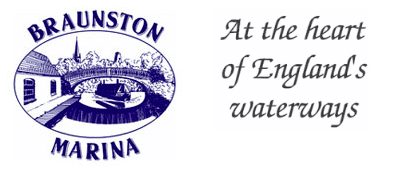 Types of Narrowboat
Types of Narrowboat
To the novice, the wide range of boat styles, sizes, deck arrangements, layouts, fit-out materials and variety of onboard equipment available must seem bewildering. We think the best way of getting a ‘handle’ on it all is to visit us, get on board as many different boats as you can, and ask questions. Our friendly and experienced staff will be happy to advise you and help you to decide what is right for you.
Our general advice is to keep an open mind and not be too prescriptive over what your boat should and should not have. Sooner or later you will board a boat and know instinctively that this is “the one”. You may not know precisely why. It may well have features that at the outset you told yourself you didn’t want. It may well not have some features you thought you did want. Nevertheless this is the boat you should go for!
Length
Perhaps the first question is what length?
Narrowboats vary from 70 feet to 20 feet! The longer the boat, it is often the more expensive to buy, moor, insure, license, repaint etc. Financial implications aside, much will depend on the use you will make of your boat. Will you be taking just a week or two’s holiday each year plus the occasional weekend or will you have the time to go on extended cruises? Will it be just you and a partner on board or will you have children with you? Will you want family and friends to join you? Perhaps you will be living aboard? These are just some of the factors that will govern what length suits you best.
Some will not consider a boat over 57 feet because they’ve heard if they do they won’t be able to cruise every canal on the system – but there aren’t many boaters who have managed that feat!. Many will buy a longer boat giving them the accommodation and comfort they want, refusing to compromise on their enjoyment just for the sake of the few canals they’ll be too big for.
Beginners especially, sometimes restrict themselves to a smaller boat through nervousness about steering a 65ft, 20 ton lump of metal through crowded narrow waters but then find themselves looking for a longer boat a year or two later when all they first needed was a good boat handling tuition session to give them the necessary confidence.
It is important to get this right as you will be investing a lot of money in your boat, the return from which will be the enjoyment you get from cruising in it and you will never be really happy if all the while you are regretting not having bought a much larger or smaller boat.
Style
The style of the rear deck can be important too. These are:
Cruiser Stern
These have a large, exposed but more sociable aft deck, normally between 5′ -8′ long, protected by taff rail. A number of passengers can safely be out with the steerer. A “wind dodger”, a weatherproof fabric curtain, can be stretched around between the taff rail and deck to provide some shelter and to help prevent infants or animals from falling overboard. The engine compartment is underneath the deckboards and does not encroach into the cabin space.
Modern Traditional Style
A “Trad” has a small, roughly semi-circular stern counter, only about 3ft long, extending over the propeller, and the steerer stands in the atchway within the aft doors of the cabin. There is little room for anyone else. This can be a bit unsociable for some but tranquil solitude for others! Some Trads do have an extra-wide and long sliding hatch which allows a passenger to stand with the steerer. The engine is immediately inside the doors, usually decked over or boxed in.
Semi-Traditional
This style is a ‘cross’ between a cruiser stern & a trad. It has the large, “social” aft deck which for the most part is surrounded with high bulwarks, or side plates, that continue the line of the cabin superstructure so that, when viewed from the sides, it looks like a traditional-style. It provides a safe area, often with seating, where children & pets can be under the watchful eye of the steerer. The engine compartment is under the deck-boards.
‘Fully’ Traditional
The aft accommodation is a Boatman’s Cabin containing the traditional cooking range and table & bed cupboards. Forward of this is the engine room usually containing either a vintage or modern replica slow-revving engine. Replicating the aft arrangement of the old working boats, this is a boat for the real enthusiast who enjoys tinkering about with engines.
Tug-Style
With the same aft arrangements of the Fully Traditional, a Tug additionally has a long front deck usually raised to the level of the gunwales with storage under and often with a bed that slides out into the forward cabin. Very occasionally it is a cargo hold with a cratchboard, long top plank and side cloths. The cabin space forward of the engine room is necessarily greatly reduced. Not so much an enthusiast’s boat as a fanatic’s !
Dutch Barge
Distinctively modeled, as the name implies, on the style of Dutch barges the cabin-top is vertically sided, having little or no tumble-home, and the large fold-down wheel-house is above the engine compartment. It usually has a small, bulwarked fore-deck with no well. Some boaters do not like wheel steering saying it lacks the more direct feel, response and accuracy of the more traditional tiller arrangement but perhaps that’s due to lack of practice!
Quick links to more information in this section: –
